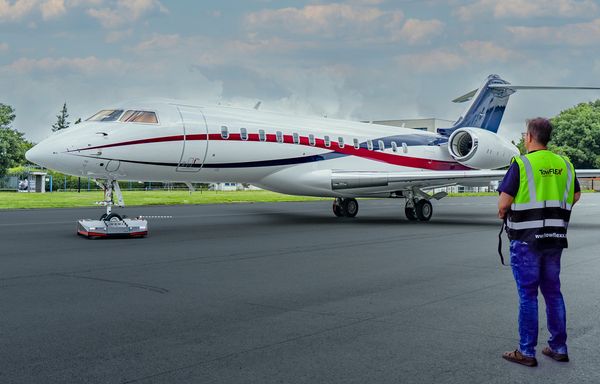On Friday, April 5, a magnitude 4.8 earthquake rocked eastern New Jersey, causing buildings to shake for up to 30 seconds. The shaking was felt as far North as Albany in New York and south as Wilmington in Delaware. Following the earthquake, there were no reported deaths or injuries; the only damage to be noted was weaker buildings. Friday’s earthquake was one of the largest felt across the Northeast in recent years.
Ground Stops
The Federal Aviation Administration (FAA) issued ground stops at the airports closest to the epicenter in response to the earthquake. The airports affected by ground stops included Newark Liberty Int’l Airport (EWR) and New York John F. Kennedy Int’l (JFK). The FAA ground stop was issued as a precaution while workers at these airports assessed airport facilities for any damage caused by the brief earthquake.
The ground stop at JFK was lifted first at around 11:10 a.m. local time, while the EWR ground stop was lifted around 20 minutes later at 11:30 a.m. local time. Delays at JFK following the ground stop were less significant than in Newark, with JFK reporting an average 20-minute delay for flights departing the airport. In Newark, however, for some unlucky flights, this delay time was as high as one hour.
During earthquakes, it is standard operating procedure for airport facilities to cease operations while the tremors occur. Some airports, such as those in Japan, are prone to powerful, long earthquakes, but they are built to withstand more powerful quakes and have developed procedures to follow after a powerful earthquake. At Narita Airport (NRT) in Tokyo, if an earthquake of a certain magnitude or greater is detected, an announcement will sound, notifying passengers to stay calm and away from windows, walls, and pillars.
If an earthquake is powerful enough in Japan, the terminal buildings will be evacuated, with airport employees bringing passengers outside on the tarmac. Following the Tōhoku earthquake in March 2011, all flights out of Japanese airports north of Tokyo were canceled.
Most airports in Asia along the so-called "Ring of Fire" are built to an extent to withstand strong earthquakes. Following the April 4 Hualien City earthquake in Taiwan, air travel out of many of Taiwan's major international airports continued as normal, with only minor damage and delays reported from airlines. Some airports in Southern Japan were closed temporarily following the earthquake but have since reopened with minimal disruptions.
Most aircraft landing gears are built with shock absorbers to withstand hard landings. This means that an aircraft's landing gear will absorb most of the quake's tremors during an earthquake, leading to the aircraft being unaffected and undamaged.
Besides potentially affecting airport buildings and the sensitive radio and electrical equipment inside them, earthquakes can also affect airport runways through a process known as liquefaction. Liquefaction occurs when the rapid shaking of the ground during an earthquake causes the soil underground (typically soil with a higher amount of water) to act as a liquid. Liquefaction can no longer support the weight above it.
This means that if an earthquake is powerful enough to cause the liquefaction of the soil beneath an airport runway, the runway will crack and buckle, leaving it unusable to air traffic afterward. Certain organizations, such as Oregon State University, are studying the effects a major earthquake might have on U.S. airports - in this case, Portland Intl Airport (PDX) in Oregon.
Air France Announces Paris-Las Vegas Nonstop Service » Pakistan International Airlines Returns to Manchester after 5-Year Ban » PHOTOS: Inside Gulfstream's New G800, the World's Longest-Range Business Jet »
Comments (0)
Add Your Comment
SHARE
TAGS
NEWS earthquakeNew YorkEWRJFKUnited AirlinesAmerican AirlinesFAAUnited StatesDelta AirlinesNew JerseyGround stopRECENTLY PUBLISHED
 Pakistan International Airlines Returns to Manchester after 5-Year Ban
After a hiatus of more than five years, Pakistan International Airlines (PIA) has resumed flights to the United Kingdom. The newly reinstated nonstop service between Islamabad (ISB) and Manchester (MAN) officially took off on October 25th.
ROUTES
READ MORE »
Pakistan International Airlines Returns to Manchester after 5-Year Ban
After a hiatus of more than five years, Pakistan International Airlines (PIA) has resumed flights to the United Kingdom. The newly reinstated nonstop service between Islamabad (ISB) and Manchester (MAN) officially took off on October 25th.
ROUTES
READ MORE »
 This Delaware Firm is Saving FBOs Millions in Hangar Costs
When most people picture innovation in the aerospace industry, they envision new airline or aircraft startups that revolutionize the way people travel. But sometimes, the biggest revolutions happen on the ground. One Delaware-based aviation firm is quietly shaping the way airports, FBOs, and MROs move aircraft, and saving them millions of dollars in the process.
STORIES
READ MORE »
This Delaware Firm is Saving FBOs Millions in Hangar Costs
When most people picture innovation in the aerospace industry, they envision new airline or aircraft startups that revolutionize the way people travel. But sometimes, the biggest revolutions happen on the ground. One Delaware-based aviation firm is quietly shaping the way airports, FBOs, and MROs move aircraft, and saving them millions of dollars in the process.
STORIES
READ MORE »
 Air France Announces Paris-Las Vegas Nonstop Service
Air France is expanding its US operations with a new nonstop service from Paris to Las Vegas, significantly enhancing travel options between these two cities. This strategic move not only benefits travelers but also promises economic growth and cultural exchange, while positioning Air France as a key player in the competitive transatlantic market.
ROUTES
READ MORE »
Air France Announces Paris-Las Vegas Nonstop Service
Air France is expanding its US operations with a new nonstop service from Paris to Las Vegas, significantly enhancing travel options between these two cities. This strategic move not only benefits travelers but also promises economic growth and cultural exchange, while positioning Air France as a key player in the competitive transatlantic market.
ROUTES
READ MORE »



